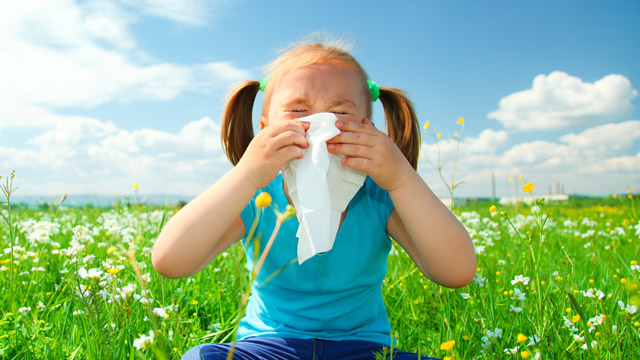 Serhiy Kobyakov/PhotoSpin
Serhiy Kobyakov/PhotoSpin
According to the Centers for Disease Control and Prevention, since 1997 the number of American children diagnosed with childhood allergies has been steadily increasing.
These allergies can be food-related (nuts, dairy, soy, etc.), animal-related (e.g., dog and cat hair), or just be part of the environment (dust, mold, grass). And they can affect a child's skin, respiration and sinus passages.
Being allergic to anything is tough for anyone, but it is especially trying for children and their parents. Some allergies are so severe that a child's exposure to an allergen could lead to a life or death situation. Knowing how to deal with childhood allergies is of upmost importance.
5 Steps to Fighting Childhood Allergies
Step 1) Know what the child is allergic to.
This sounds simple but actually having a child see an allergist for testing is one of the most important things a parent can do. There are two types of tests: skin testing and blood testing.
Skin testing is the most preferred method, and the least expensive, but blood testing for allergies is sometimes done for specific reasons.
For instance, if a child has poorly controlled asthma, can't take the numerous skin pricks, or is taking medicine that would interfere with a skin test, then a blood test may be considered.
The best advice is to listen to the child's doctor and go with what is recommended. Remember that food allergies and seasonal allergies are often treated differently.
Step 2) Take the results seriously.
When a child has an allergy to a specific item or items, this information should be taken seriously and the child's environment should be altered.
If nuts are an issue, no one in the house should eat anything with nuts in them, or maybe you can keep any products with nuts in a special cupboard children can not get into.
If dust is a provoking allergen, looking into a vacuum cleaner with a top-of-the-line air filter might be a good idea.
Step 3) Tell people around the child about the allergy.
In addition to getting the information into your child's school records, be sure to let the teacher, caretaker and other family members know about the allergy.
This is especially true if the child is too young to speak up for him or herself. As children get older they should be empowered to tell adults about their allergies.
Step 4) Be prepared.
The steps required to become prepared for an allergic reaction depends greatly on the type and severity of the allergy. Some children may need to carry an epinephrine autoinjector such as an EpiPen with them. Others may need just a pre-dosed container of Benedryl.
Monitor pollen counts and adjust outdoor activities accordingly. Dry, windy days can be particularly high in pollen.
Step 5) Be sure to give the child his/her medicine.
Listen to the expertise of the doctors and follow their directions. For instance, if they say to give the child Claritin every day, administer it ever yday, regardless of whether or not there is sneezing going on in the morning.
Medicine can get expensive but a trip to the emergency room will cost much more then any allergy medicine. Also remember multivitamins are building blocks to a strong immune system, and should be incorporated into a child’s daily routine.
Sources:
Claritin.com. Web. 25 September 2013. "Tips for parents".
https://www.claritin.com/kids/tips-for-parents/index.aspx
CDC.gov. Web. Published May 2013. "Trends in Allergic Conditions Among Children: United States, 1997–2011".
http://www.cdc.gov/nchs/data/databriefs/db121.htm
Webmd.com . Web. 26 September 2013. "Blood testing for allergies."
http://www.webmd.com/allergies/guide/blood-test
Allergies.about.com . Web. Updated 17 July 2013. "Allergy Testing".
http://allergies.about.com/od/allergies101/a/allergytest.htm
Reviewed September 26, 2013
by Michele Blacksberg RN
Edited by Jody Smith





Add a CommentComments
There are no comments yet. Be the first one and get the conversation started!